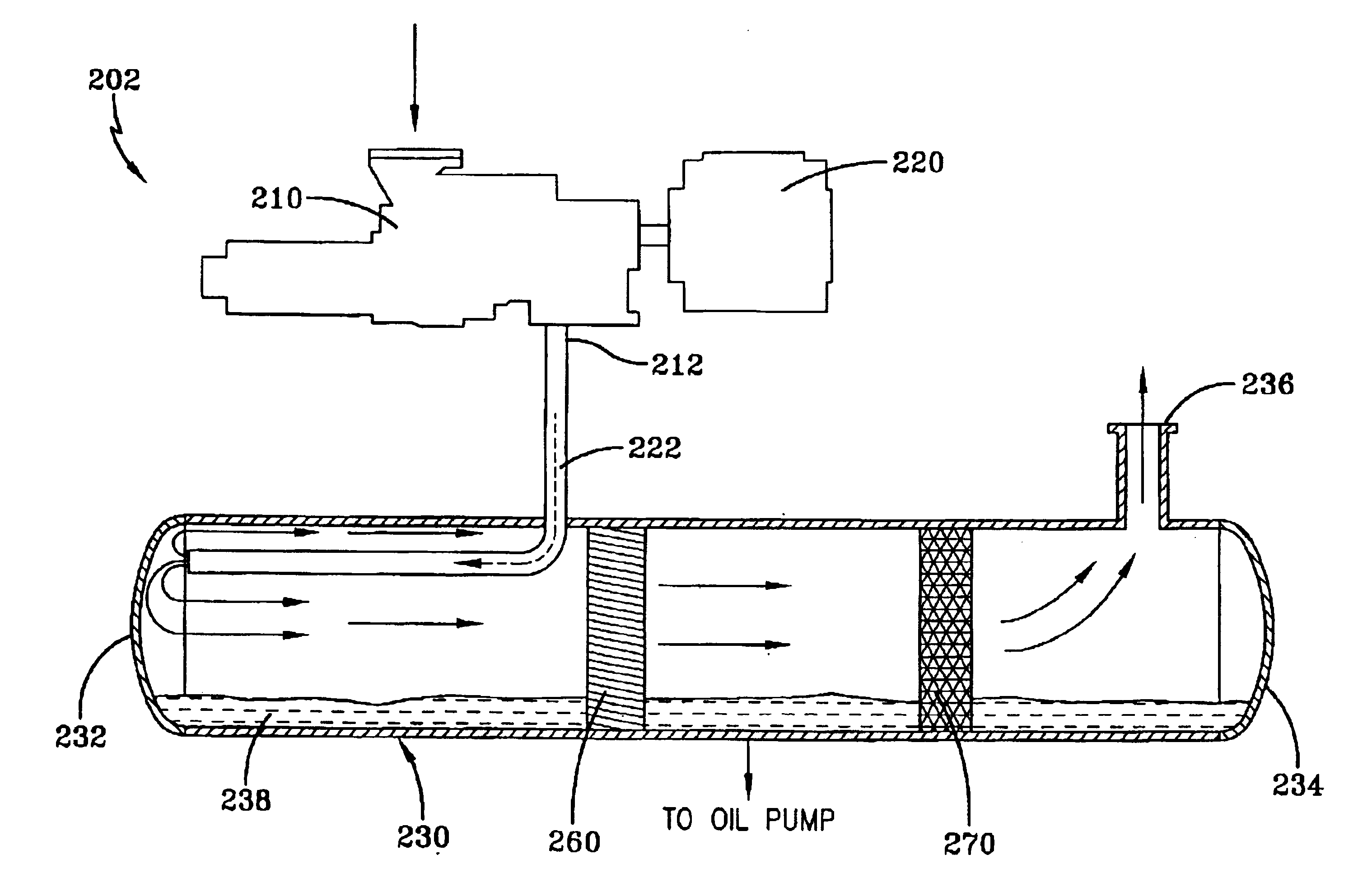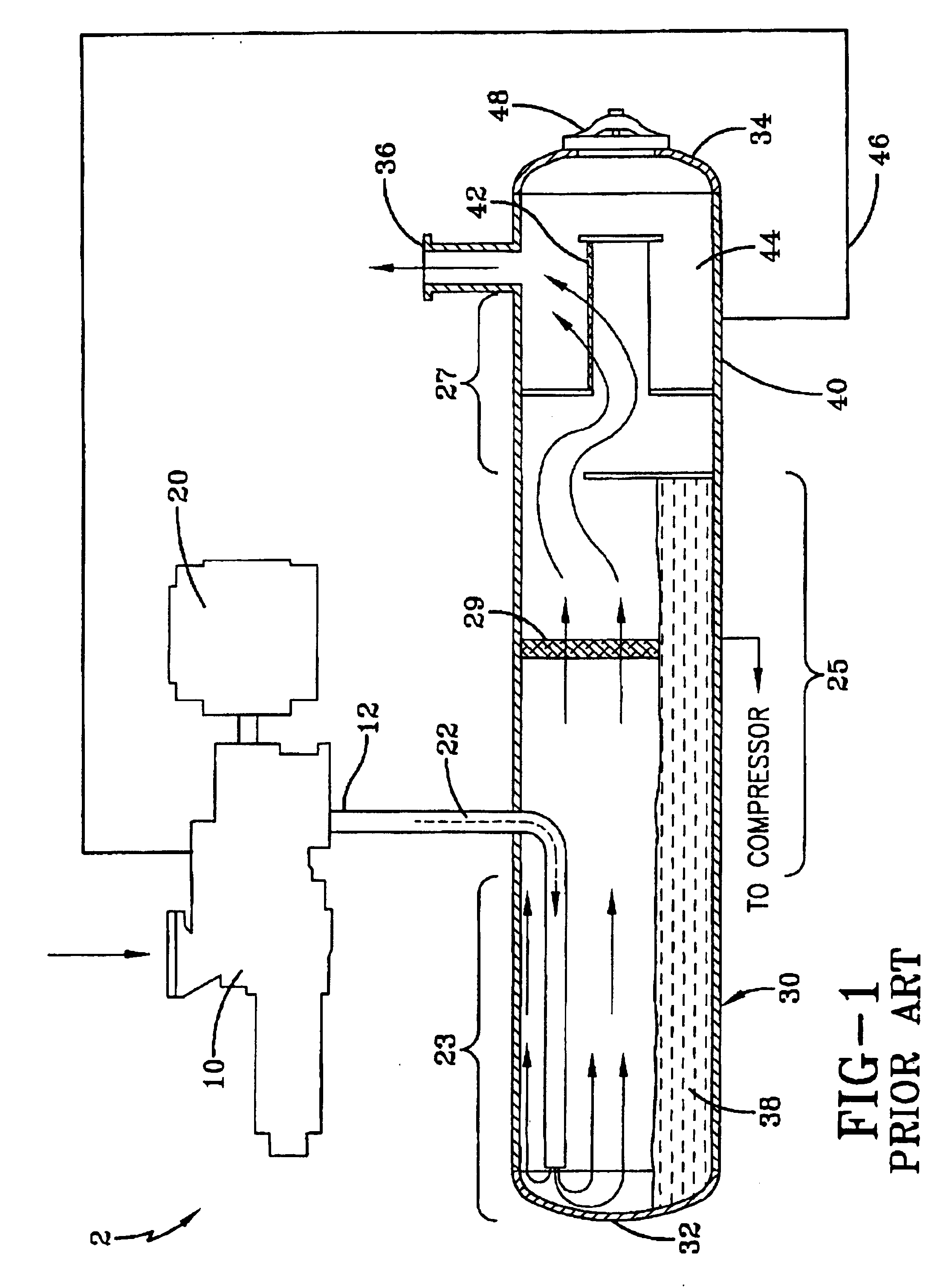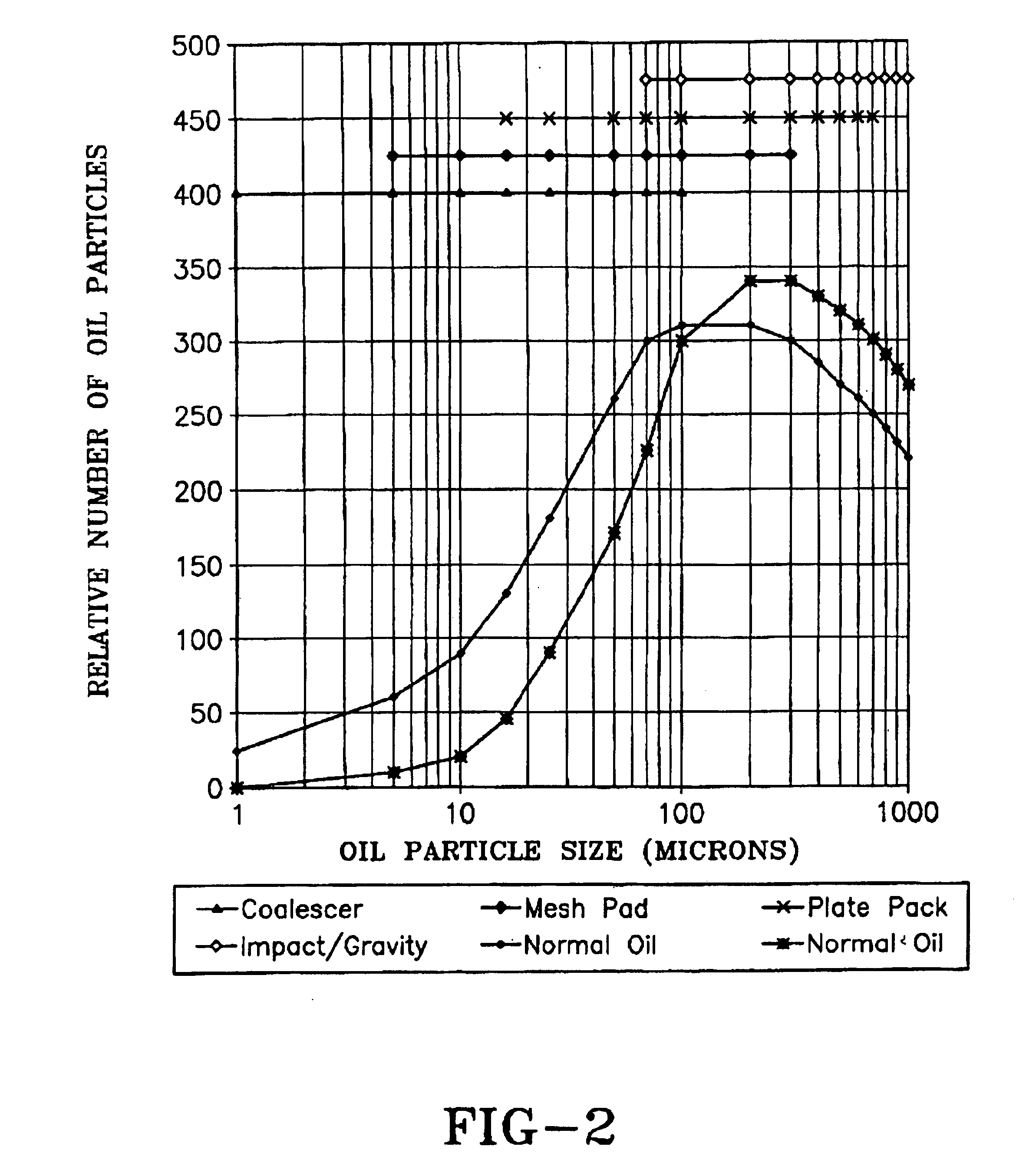Compressor systems for use with smokeless lubricant
a smokeless lubricant and compressor technology, applied in the direction of liquid fuel engines, lighting and heating apparatus, separation processes, etc., can solve the problems of aerosol formation, add to the cost of operation, aerosol formation is not readily available, etc., to reduce the efficiency of heat exchangers, minimize or eliminate the likelihood, the effect of reducing the formation of oil aerosols
- Summary
- Abstract
- Description
- Claims
- Application Information
AI Technical Summary
Benefits of technology
Problems solved by technology
Method used
Image
Examples
example 1
[0054]An embodiment of the present invention designed to operate with “smokeless” lubricant is set forth in FIG. 3. A schematic of a portion of an existing screw compressor of the present invention 202 shows the compressor 210, the motor 220 which may be integral with compressor 210 and a separator 230, which eliminates the third stage 27 and thus the coalescer portion 40 utilized in the prior art practice. FIG. 3 is illustrative and is not meant to limit the present invention to screw compressors or to a particular type of screw compressor, and can include male / female screw compressors, single screw compressors or any variations of screw compressor technology. Compressed gas and entrained lubricant exits compressor discharge port 212 and is carried by conduit 222 into separator 230. Separator 230 is a horizontal separator and includes a first head 232, a second head 234, and a discharge port 236. Within separator 230 are an optional vane mist eliminator 260 and mesh mist eliminator...
example 2
[0060]A second embodiment of the present invention designed to operate with “smokeless” lubricant is set forth in FIG. 5. This design is similar to the design set forth in FIG. 3, except that the reservoir for the agglomerated fluid is external to the separator. A schematic of a portion of an existing screw compressor of the present invention 402 shows the compressor 410, the motor 420 which may be integral with compressor 410 and a separator 430, which eliminates the third stage coalescer portion 40 utilized in the prior art practice. Compressed gas with entrained lubricant exit compressor discharge port 412 and are carried by conduit 422 into separator 430. Separator 430 is a horizontal separator and includes a first head 432, a second head 434, and a discharge port 436. Within separator are a vane mist eliminator 460 and a mesh mist eliminator 470. Compressed fluid traveling at high velocity entering the separator through conduit 422 exits the conduit as in the prior art design. ...
example 3
[0063]A third embodiment of the present invention designed to operate with “smokeless” lubricant is set forth in FIG. 6. This design is similar to the design set forth in FIG. 3, except that compressed fluid traveling at a high velocity upon entering separator 530 after leaving conduit 522 passes through a centrifugal separator 533 positioned immediately adjacent the conduit exit within separator 530. A schematic of a portion of an existing screw compressor of the present invention 502 shows the compressor 510, the motor 520 which may be integral with compressor 510 and a separator 530, which eliminates the third stage coalescer portion 40 utilized in the prior art practice. Compressed fluid comprising refrigerant and entrained lubricant exits compressor discharge port 512 and is carried by conduit 522 into separator 530. Separator 530 is a horizontal separator and includes a first head 532, a second head 534, and a discharge port 536. Compressed fluid traveling at high velocity ent...
PUM
| Property | Measurement | Unit |
|---|---|---|
| size | aaaaa | aaaaa |
| diameter | aaaaa | aaaaa |
| diameter | aaaaa | aaaaa |
Abstract
Description
Claims
Application Information
 Login to View More
Login to View More - R&D
- Intellectual Property
- Life Sciences
- Materials
- Tech Scout
- Unparalleled Data Quality
- Higher Quality Content
- 60% Fewer Hallucinations
Browse by: Latest US Patents, China's latest patents, Technical Efficacy Thesaurus, Application Domain, Technology Topic, Popular Technical Reports.
© 2025 PatSnap. All rights reserved.Legal|Privacy policy|Modern Slavery Act Transparency Statement|Sitemap|About US| Contact US: help@patsnap.com



